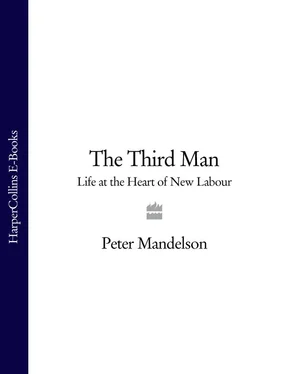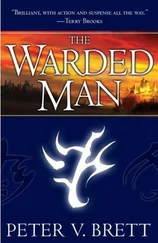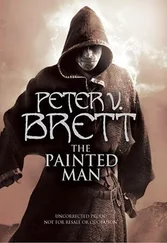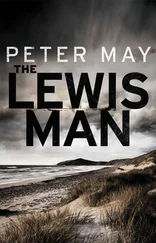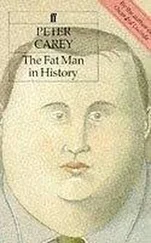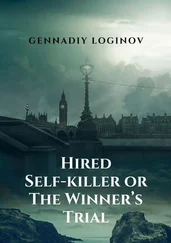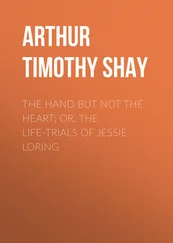Dr Cowan was reassuring. There was nothing seriously wrong with me, he said. It was just the inevitable result of steadily building pressure, the demands of the job and the demands I was putting on myself. He prescribed three weeks of self-discipline, and sleep. I must arrive at Walworth Road no earlier than 9.30 a.m., leave at 5 p.m. sharp, take no work home with me, and be in bed by ten. He also prescribed sleeping pills for several weeks. I was very reluctant to take them. When I was growing up, medicine was rather frowned upon at Bigwood Road: getting my mother to dispense as much as an aspirin took some persuasion. But I followed Dr Cowan’s advice to the letter. Within a few weeks I dispensed with the tablets, and the crisis passed.
My recovery, and Labour’s too, really began ten days before the grand policy launch, with a campaign of another sort. It was the first by-election on my watch, in Fulham, caused by the death of the sitting Conservative MP. At least in this battle I had some handson experience, from Brecon and Radnor. But I knew it would be the first test of the kind of modern campaigning machinery I had put in place with Philip and the SCA, and that sceptics and critics on the NEC would be keenly eyeing both the campaign and the result. There seemed to be little realistic prospect that we would win. Worse, with the Tory government growing increasingly unpopular, many pundits seemed to think the likeliest winner was the SDP, whose candidate was none other than my old south London friend Roger Liddle.
I think that only a few weeks earlier I could not have faced the challenge. But I knew we had to make every effort to at least make the election close. With Philip’s constant encouragement, we organised a campaign for our candidate, Nick Raynsford, that was eye-catching, simple and, it turned out, extraordinarily effective. Both the Conservative, Matthew Carrington, and Roger lived outside the constituency – to be fair, in Roger’s case this was only by a matter of a few miles – but all our campaign literature was dominated by an engaging photograph of our prospective MP framed by one, strikingly presented slogan: ‘Nick Raynsford Lives Here’. The fact that local Labour supporters throughout the constituency began taping the image to their front windows made the effect especially powerful and amusing.
On the night of the election, 10 April 1986, Labour took the seat from the Tories. Roger finished a fairly distant third. This personal embarrassment for me was made even more difficult by the fact that Roger’s wife, Caroline, was also a good friend from my days in youth politics. When she spotted me at the election count, she gave me what my mother would have called ‘an old-fashioned look’. I could hardly blame her. I was sad that Roger had lost, and resigned to the likelihood that it would be some time before my friendship with him and Caroline could be repaired. At the same time, I was elated that our revamped campaigning team had met its first obstacle, and convincingly and unexpectedly cleared it.
Then came the ‘Freedom and Fairness’ launch. We had been working for months to make it unmistakably new, and it was. The result was a campaign document that not only included the kind of policy pledges expected of Labour, like increased child benefit, educational subsidies for young people and new housing opportunities, but was also about making individuals freer in their day-to-day lives. We promised a greater say for patients in the NHS, and set out measures against vandalism and crime. The design, too, was sleeker, friendlier on the eye. The SCA had given the brief to Trevor Beattie, whose talent for finding eye-catching, if sometimes controversial, ways to grab the public’s attention would later produce Wonderbra’s ‘Hello Boys’ ads. Instead of our old-style Labour stickers, we minted metal badges in edgy black, grey and silver.
In what would become a pattern for many of the changes we went on to make, I had a brief moment of drama with Neil as the posters and media packs were going to the printers. Three days before the launch, he called me in and exclaimed, ‘Where does it say “Labour’s Freedom and Fairness Campaign”? What’s this “Putting People First”? Where’s the title?’ Feeling much better, more confident – and more rested – than I had for some time, I assured him that both freedom and fairness were still at the centre of the campaign. What we had done was to bring together real policy ideas to put those values into practice. Just like the imagery and artwork, the point was to move beyond talking in a political language that would pass most people by, and, yes, to say directly that we were ‘putting people first’. As delicately as I could, I reminded Neil that he had signed off on every creative stage of the campaign along the way. Besides, I said, not quite truthfully, it was almost surely too late to change. But Neil was adamant. In the end, literally almost as the presses were beginning to roll, I arranged for the printers to include the words ‘Labour’s Freedom and Fairness Campaign’, in small letters, along the side of each poster and pamphlet.
The most striking change was the site of the launch. It was not in a scruffy room at Walworth Road, but in the International Press Centre near Fleet Street. By the time we got there, Neil had been won over to the idea, and the design, of the campaign. He was typically fluent and forceful in tying together the policy prospectus with the themes of freedom and fairness. A small girl whose parents had agreed for her to be featured as the main image in our publicity material had come to the launch, and Neil – wonderfully, spontaneously – lifted her aloft. The photographers loved it.
Less enthusiastic was Eric Heffer, who had turned up unexpectedly and stood scowling at me from the back of the room. ‘It’s disgraceful,’ he muttered. When I failed to reply, he continued: ‘It’s more than disgraceful. It’s disgusting! The NEC never approved this. Where’s the Red Flag? What is “Putting People First”?’ Stalking out, he delivered a parting shot. This was not the Labour Party he had joined, he fumed. It was just one of a series of heartening reviews. From the other end of the political horizon Norman Tebbit, the Tory Chairman, issued a blistering condemnation of our ‘slickness’. The press, too, sat up and took notice. Not only were there warm responses from our own camp, the Guardian and Tribune ; the Economist saw the choice of venue as a sign that Labour was determined ‘never again to look dowdy or old-fashioned’. Even the FT nodded approvingly.
Heffer was right about one thing: I had never sought detailed NEC approval for the new approach and the new look. I knew I would never have got it. At the very minimum, there would have been endless debate over every dot and comma. The most that would have come out of it was a hugely scaled-down version that would not have had anything like the same impact. I did, of course, have the NEC’s endorsement for the central themes of freedom and fairness. I reassured Larry Whitty, as I had told Neil, that our job had simply been to find a new and effective way to get people to listen to that message.
This would set the pattern for much of my future dealings with Larry and the NEC. I recognised that they were my bosses, and was careful to follow the letter of their directives. But I hoped, and became increasingly confident, that by pushing the limits of the spirit of their decisions we could make a major impact on how the party and its policies were seen. I discovered one important tactic early on. When I received an especially heavy-handed policy pronouncement – on the economy, on trade unions, on defence – for our latest party publicity, I would have the text squeezed onto the right-hand side of the page. I would then sit down with the increasingly enthusiastic and hard-working team around me at Walworth Road, people like Jim Parish, Anna Healy and Jackie Stacey, and go through every vote-losing word, picking out the most attractive-sounding phrases – about growth and prosperity rather than state control, or support for a strongly defended Britain rather than unilateral disarmament – and highlighting them in big, attractive type in the wide margin.
Читать дальше
